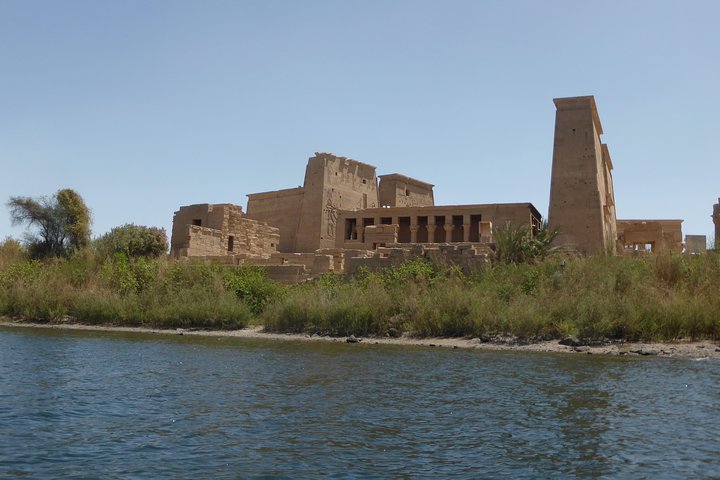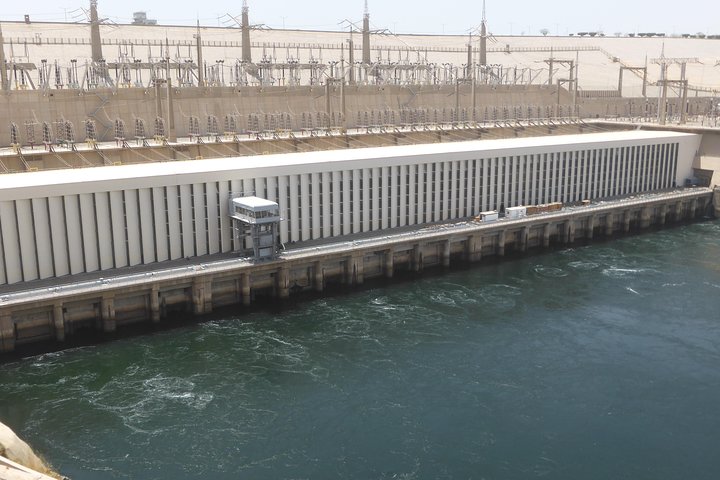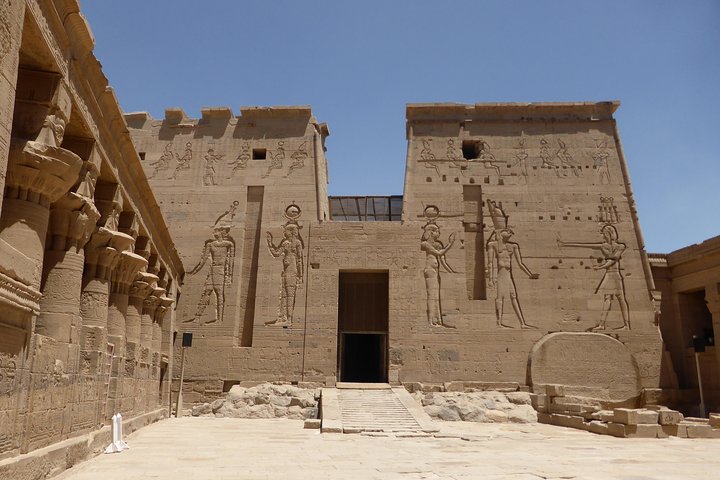Luxor to Aswan - Full Day Private Tour - High Dam and Philae Temple











You will be picked up by a professional English-speaking tour guide and will drive south past picturesque villages to Aswan. Our first stop will be a modern wonder of technology. Built in the 1950s, the Aswan High Dam brought the Nile’s devastating floods to an end, reclaimed more than 100,000 acres of desert land for agriculture and made further crops possible on an additional 800,000 acres.
After lunch at a good local restaurant, we board a motorboat to Philae Island. After the construction of the Aswan Low Dam, it was completely submerged in the Nile but with help of UNESCO, it found a new home on the Island Agilkia. The first structure that greets visitors is the iconic Trajan's Kiosk, built in the 2nd Century AD by the Roman Emperor Trajan. The main structure on the island is the Temple of Isis; the goddess of health, marriage, motherhood, and wisdom. You will visit the temples and the ancient Nilometer.
At the end of the tour, you will be brought back to your hotel in Luxor.
Description
Itinerary
This is a typical itinerary for this product
Stop At: Aswan High Dam, Manteqet As Sad Al Aali, Aswan Egypt
The first Aswan dam (1902) provided valuable irrigation during droughts but could not hold back the annual flood of the mighty Nile River. This is the so called Low Dam. In the 1950s, Egyptian leader Gamal Abdel Nasser envisioned building a new dam across the Nile, one large enough to end flooding and bring electric power to every corner of Egypt. The giant reservoir created by the dam–300 miles long and 10 miles wide–was named Lake Nasser in his honor. The formation of Lake Nasser required the resettlement of 90,000 Egyptian peasants and Sudanese Nubian nomads, as well as the costly relocation of the ancient Egyptian temple complex of Abu Simbel, built in the 13th century B.C. and the Philae Temple which was relocated on the Island of Agilkia.
The Aswan High Dam brought the Nile’s devastating floods to an end, reclaimed more than 100,000 acres of desert land for agriculture, and made further crops possible on an additional 800,000 acres.
At the dam site is a small pavilion with displays detailing the dimensions and the construction of the dam; on the western side is a monument honoring Soviet-Egyptian friendship and cooperation.
Note that video cameras and zoom lenses are not allowed on site.
Duration: 45 minutes
Stop At: Temple of Philae, Island of Agilika, Aswan Egypt
Built to honor the goddess Isis, this was the last temple built in the classical Egyptian style. Construction began around 690 BC, and it was one of the last outposts where the goddess was worshiped. The cult of Isis continued here until at least AD 550.
The last construction dates from the 1960s. After the construction of the Aswan Low Dam in 1902, the whole temple was submerged after the flooding of Lake Nasser. A major multinational UNESCO team relocated the temple to its new location on Agilkia Island which was landscaped to resemble the original sacred isle of Isis. You can still see the submerged original island a short distance away, punctuated by the steel columns used in the moving process.
The first structure that greets visitors is the iconic Trajan's Kiosk, built in the 2nd Century AD by the Roman Emperor Trajan. The main structure on the island is the Temple of Isis. The goddess Isis has different roles in different cultures. To some she is the sister-wife of the great god Osiris and mother of Horus, the falcon-headed deity. To most she is the goddess of health, marriage, motherhood, and wisdom.
There are some interesting finds as well like an inscription referencing Napoleon Bonaparte whose French army had recently conquered Alexandria. This graffiti was inscribed in 1799 and many Egyptologists believe Philae was the last place in the country where the ancient religion was practiced.
Duration: 1 hour 30 minutes
Inclusions
- Professional Tourguide
- Air-conditioned vehicle
- Private transportation
- Lunch - Lunch will be taken at a good local restaurant to let you encounter the Egyptian kitchen (food only).
- All Fees and Taxes
- Entry/Admission - Aswan High Dam
- Entry/Admission - Temple of Philae
Exclusions
- Tips and Personal Spendings
Additional information
- Infant seats available
- Service animals allowed
- Near public transportation
- Stroller accessible
- Not wheelchair accessible
- This trip includes a motorboat ride
- Most travelers can participate
- Regularly sanitized high-traffic areas
- Gear/equipment sanitized between use
- Transportation vehicles regularly sanitized
- Guides required to regularly wash hands
- Paid stay-at-home policy for staff with symptoms
- COVID-19 vaccination required for guides
- EgBride Travel has worked tirelessly to ensure the health and safety of our guests and all team members are fully vaccinated. We have taken all security measures according to the guidelines of the Ministry of Tourism to guarantee a safe and wonderful experience for our guests.
- This experience requires good weather. If it’s canceled due to poor weather, you’ll be offered a different date or a full refund
- This experience requires a minimum number of travelers. If it’s canceled because the minimum isn’t met, you’ll be offered a different date/experience or a full refund
- This is a private tour/activity. Only your group will participate
- Confirmation will be received at time of booking
Ticket delivery
You can present either a paper or an electronic voucher for this activity.
Operates
See Availability
Cancellation
For a full refund, cancel at least 24 hours in advance of the start time of the experience.
Culture Tours by Duration Tours, Sightseeing & Cruises Sightseeing Tours Tours & Sightseeing Private and Luxury Bus Tours Archaeology Tours Private Sightseeing Tours Cultural Tours Historical Tours Full-day Tours Day Trips
Checkout these other experiences on Plan Harmony
- Extreme Adventure: Zip Line, Rappel, UTV, Indoor Skydiving, Waterslide and more!
- High Red Dunes with Camel Ride, Sandboarding, Falcon Show and VIP BBQ Dinner
- Edohuzei Shitamachi Rickshaw Tour in Asakusa
- Upper Pigeon River Rafting Trip from Hartford
- Tour of North Shore & Sightseeing
- Private Black Taxi Belfast City Tour
- Private Day Tour of Taj Mahal and Agra Fort By Superfast Train - All Inclusive
- Private guided tour of the city of Carcassonne
- Bohemian and Saxon Switzerland National Park Day Trip from Prague - Best Reviews
- Floating & Railway Markets, Salt & Coconut Farms Tour